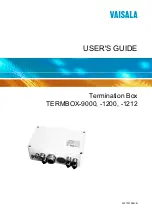
14-9
Cisco ME 3400 Ethernet Access Switch Software Configuration Guide
OL-9639-07
Chapter 14 Configuring STP
Understanding Spanning-Tree Features
Spanning-Tree Address Management
IEEE 802.1D specifies 17 multicast addresses, ranging from 0x00180C2000000 to 0x0180C2000010, to
be used by different bridge protocols. These addresses are static addresses that cannot be removed.
Regardless of the spanning-tree state, each switch receives but does not forward packets destined for
addresses between 0x0180C2000000 and 0x0180C200000F.
If spanning tree is enabled, the CPU on the switch receives packets destined for 0x0180C2000000 and
0x0180C2000010. If spanning tree is disabled, the switch forwards those packets as unknown multicast
addresses.
Accelerated Aging to Retain Connectivity
The default for aging dynamic addresses is 5 minutes, the default setting of the
mac address-table
aging-time
global configuration command. However, a spanning-tree reconfiguration can cause many
station locations to change. Because these stations could be unreachable for 5 minutes or more during a
reconfiguration, the address-aging time is accelerated so that station addresses can be dropped from the
address table and then relearned. The accelerated aging is the same as the forward-delay parameter value
(
spanning-tree vlan
vlan-id
forward-time
seconds
global configuration command) when the spanning
tree reconfigures.
Because each VLAN is a separate spanning-tree instance, the switch accelerates aging on a per-VLAN
basis. A spanning-tree reconfiguration on one VLAN can cause the dynamic addresses learned on that
VLAN to be subject to accelerated aging. Dynamic addresses on other VLANs can be unaffected and
remain subject to the aging interval entered for the switch.
Spanning-Tree Modes and Protocols
The switch NNIs and ENIs with STP enabled support these spanning-tree modes and protocols:
•
PVST+—This spanning-tree mode is based on the IEEE 802.1D standard and Cisco proprietary
extensions. It is the default spanning-tree mode used on most Ethernet port-based VLANs. The
PVST+ runs on each VLAN on the switch up to the maximum supported, ensuring that each has a
loop-free path through the network.
The PVST+ provides Layer 2 load balancing for the VLAN on which it runs. You can create different
logical topologies by using the VLANs on your network to ensure that all of your links are used but
that no one link is oversubscribed. Each instance of PVST+ on a VLAN has a single root switch.
This root switch propagates the spanning-tree information associated with that VLAN to all other
switches in the network. Because each switch has the same information about the network, this
process ensures that the network topology is maintained.
•
Rapid PVST+—This spanning-tree mode is the same as PVST+ except that is uses a rapid
convergence based on the IEEE 802.1w standard. This is the default spanning-tree mode for the
Cisco ME switch NNIs. Rapid PVST+ is compatible with PVST+. To provide rapid convergence,
the rapid PVST+ immediately deletes dynamically learned MAC address entries on a per-port basis
upon receiving a topology change. By contrast, PVST+ uses a short aging time for dynamically
learned MAC address entries.
Summary of Contents for ME 3400 Series
Page 40: ...Contents xl Cisco ME 3400 Ethernet Access Switch Software Configuration Guide OL 9639 07 ...
Page 44: ...xliv Cisco ME 3400 Ethernet Access Switch Software Configuration Guide OL 9639 07 Preface ...
Page 1138: ...Index IN 52 Cisco ME 3400 Ethernet Access Switch Software Configuration Guide OL 9639 07 ...
















































